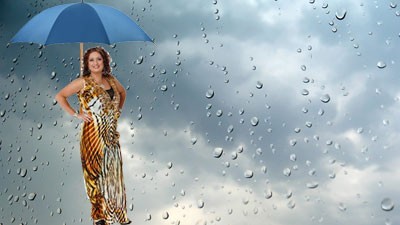How to weather-proof your investment property in winter
Published on 21/05/2015
As an investor it’s important that you safeguard your properties and prepare them for whatever weather conditions may be thrown at them. In summer, that means jobs like mulching the garden to protect plants from drying out. But with winter here, there’s lots to do to make sure you’re prepared for the havoc Mother Nature is about to mount on poorly maintained investment properties. Strong winds and heavy rain can cause the kind of damage that, although often covered by insurance, will inconvenience your tenants and could hike up your premiums.
The importance of proactive maintenance cannot be understated, especially when it comes to winter-proofing your rental properties. I always recommend that my clients assess any potential or existing issues around their properties before the problems have a chance to escalate. To check if your property is ready for winter you should think about the following tasks, which can be completed by you if you’re that way inclined, or by employing a handyman.
Minimise drafts
Gaps under doors and windows can add significantly to a heating bill for your tenants, which they won’t appreciate. Add or replace worn weather stripping around the doors and windows and any other gaps. If doorstops are worn, replace them.
Fences
Fences should be well maintained and secure. Check the footings are stable and that the palings are in good condition. If the fences are particularly bad you might consider replacing them all together. This might mean speaking with your neighbours about sharing the cost or, if the fences border public land, asking the council to go halves.
Roofing and eaves
Cracked or loose roof panels can cause leaking and water damage. Be on the lookout for rotting or water-damaged eaves, which can lead to rising damp and mould on both interior and exterior walls. Not only does that look ugly, it also makes your property smell terrible and can cause bigger problems than just being vacant.
Gutters
One of the most common winter household maintenance issues is clogged gutters, which can cause leaking and water damage. Make sure the gutters are free from leaves, twigs and other debris. This is a simple prevention and can be done on your own. However, climbing up ladders can be dangerous. If you’re not confident up a ladder employ a handyman.
Trees and shrubs
Prune loose or dead branches and check if there are any branches that have a dangerous overhang. With strong winds that are more common in winter, you don’t want a tree branch smashing through a window in the middle of the night (or any time, for that matter!).
Tiles and pavers
Check the condition of pavers and tiling for large cracks. If they seem dangerous, repair or replace them immediately because they may pose a legal risk if a tenant or one of their visitors trips and becomes injured.
Ventilation
Warm, humid rooms such as the bathroom and laundry are particularly susceptible to an outbreak of mould, especially in winter. The best way to defeat mould is to ensure there’s plenty of ventilation available. Make sure windows and doors can be opened easily and, if necessary, install an exhaust fan.
Good property management
A good property manager will always comment on any obvious signs of deterioration after routine inspections; however, it’s important to note that during these inspections, they will not be able to access all areas of the property such as the roof. So, particularly as we approach the colder months, I recommend you employ a building inspector to give you professional building advice regarding any emerging issues around your properties. Prevention is better than cure!
Melissa Opie, aka “The Property Lady”, is a multi-award-winning buyers’ advocate, bestselling author and managing director at Keyhole Property Investments. The team at KPI act for investors and owner-occupiers Melbourne wide from $400,000 to $5,000,000. You can follow “The Property Lady” on Twitter.
Melissa Opie
